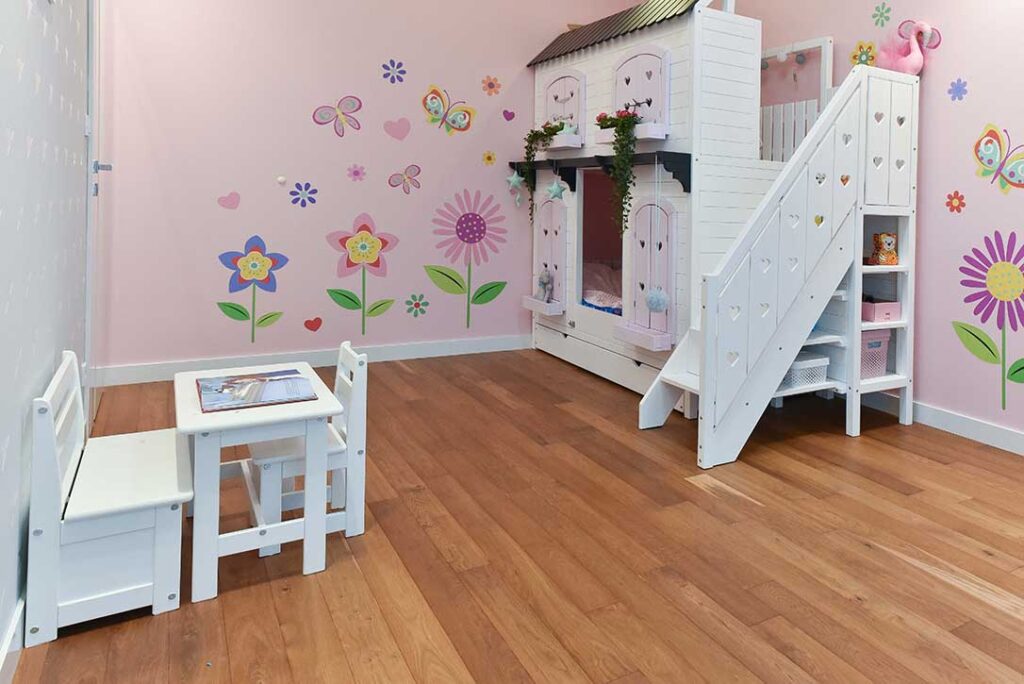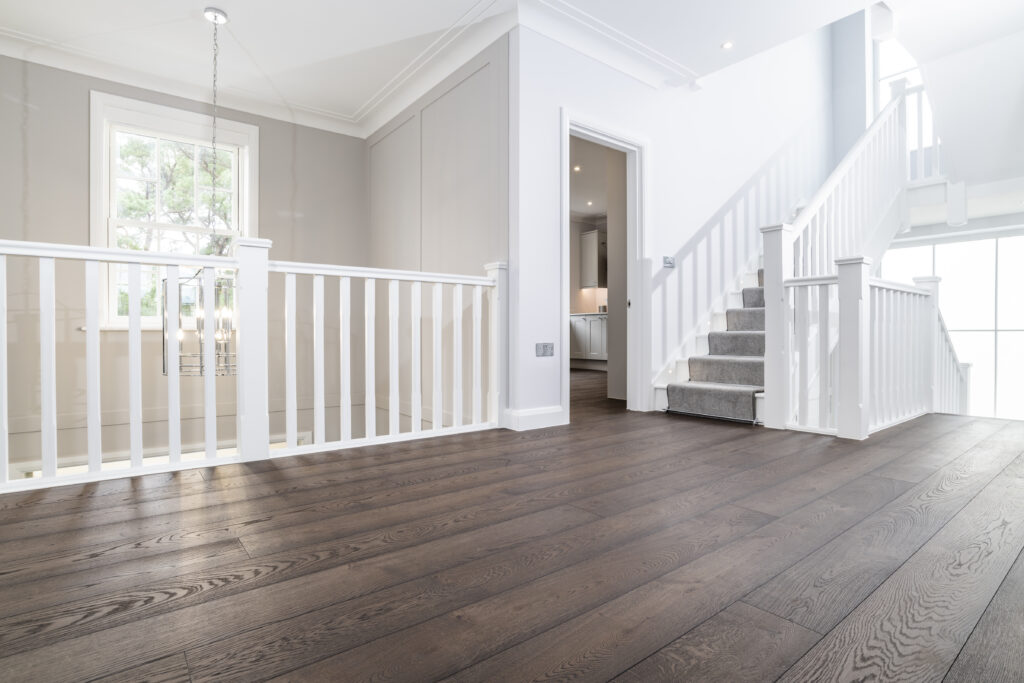
Engineered wood flooring is a stylish and practical choice for homes and commercial spaces alike. With its real wood veneer and multi-layered construction, it offers the timeless beauty of solid wood while being more durable and stable. However, to keep your engineered wood floor looking its best, regular cleaning and proper maintenance are essential.
In this guide, we’ll walk you through the best techniques and tips for cleaning and caring for engineered wood flooring, helping you preserve its beauty and extend its lifespan.
Regular cleaning does more than keep your floors looking fresh, it helps protect the wood surface from wear and tear. Dust, dirt, and grit can act like sandpaper, gradually scratching the surface and dulling the finish. By following a consistent cleaning routine, you’ll prevent unnecessary damage and maintain the floor’s natural beauty.
Cleaning also helps preserve the protective lacquered or oiled finish, which acts as a barrier against spills and stains. Additionally, proper care reduces the risk of moisture seeping into the engineered wood, which can cause swelling or warping over time. In short, regular maintenance not only enhances the floor’s appearance but also extends its lifespan.

To clean your engineered wood flooring effectively, you’ll need the right tools and products. Using gentle, non-abrasive materials will help preserve the natural wood veneer and prevent surface damage.
To protect the engineered wood surface, it’s equally important to know what not to use. Avoid:

Cleaning your engineered wood flooring doesn’t have to be complicated. By following a simple, consistent routine, you can keep your floors looking immaculate and protect them from everyday wear and tear.
To help, we have outlined an easy-to-follow, step-by-step process covering daily maintenance, weekly cleaning, and spot treatments. With the right techniques and products, you’ll preserve the natural beauty of your floors for years to come.
Daily cleaning helps prevent dirt and grit from building up and causing scratches. Use a soft-bristle broom or a microfiber dust mop to gently sweep the floor on a daily basis. This will remove loose dirt, dust, and pet hair without scratching the surface.
If you prefer to vacuum, choose one with a hardwood floor attachment. Avoid vacuums with rotating beater bars, as these can leave marks on the engineered wood. Pay special attention to high-traffic areas like hallways, kitchens, and entryways, as they tend to accumulate more debris.
For a deeper clean, vacuum your floors once a week to remove any remaining dirt or grit. Use a vacuum with a soft brush attachment designed for wood floors.
After vacuuming, mop the floor using a pH-neutral wood cleaner. But be sure the mop is only slightly damp, as excess water can seep into the planks and cause damage. You should also always mop in the direction of the wood grain to avoid streaking. Once you’ve mopped, immediately dry the floor with a soft microfiber cloth or towel to ensure no moisture lingers on the surface.
Any spills should be cleaned up immediately to prevent staining or moisture damage. Use a soft, absorbent cloth to blot the spill away. It’s important not to rub, as this can spread the liquid.
For stubborn stains, apply a small amount of wood floor cleaner to a cloth and gently dab the area. Avoid using excess liquid, and never let the cleaner sit on the surface for too long.

To keep your engineered wood flooring in excellent condition, adopt these preventative care practices:
Even with the best intentions, certain cleaning practices can inadvertently damage your engineered wood flooring. Here are some common mistakes to steer clear of:
By following a consistent cleaning routine and using the right techniques, you can keep your engineered wood flooring looking pristine for years to come. Daily sweeping, weekly vacuuming, and occasional mopping will help maintain the natural beauty and durability of your floor. Preventative measures, such as using furniture pads and area rugs, will further protect against everyday wear and tear.
Whether you’re maintaining an existing floor or considering an upgrade, engineered wood offers the perfect combination of style, stability, and longevity.
If you’re looking for high-quality, durable flooring, explore the Wood Connexions collection today. We offer a wide range of engineered wood flooring, including custom, Vintage, and Heritage collections designed to elevate your space. Contact our team for expert advice on choosing the perfect floor for your home or business.
Learn how we can collaborate on your next luxury project, offering tailored solutions and unparalleled craftsmanship.



If you would like additional information or would like to speak to a member of our team please feel free to get in touch.
Sign up now to receive expert tips and inspiring ideas with our free Wood Connexions product guide — your first step to a beautiful home.
Sign up for our newsletter and receive your free product guide packed with inspiration and expert tips to transform your home.